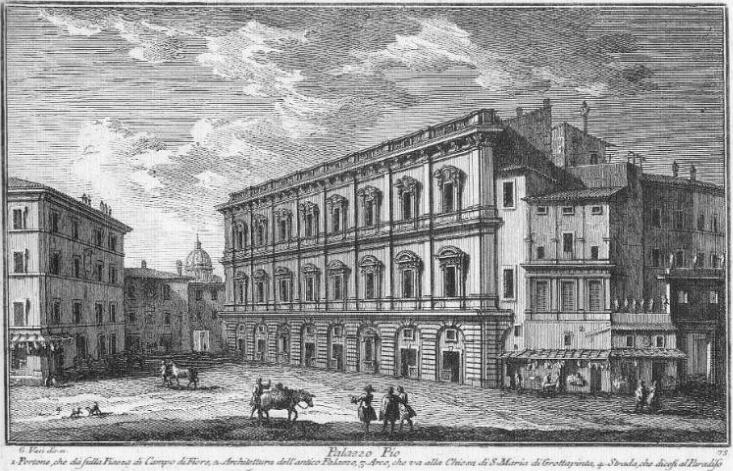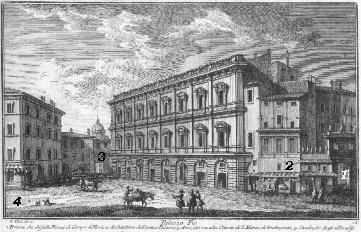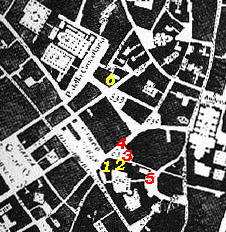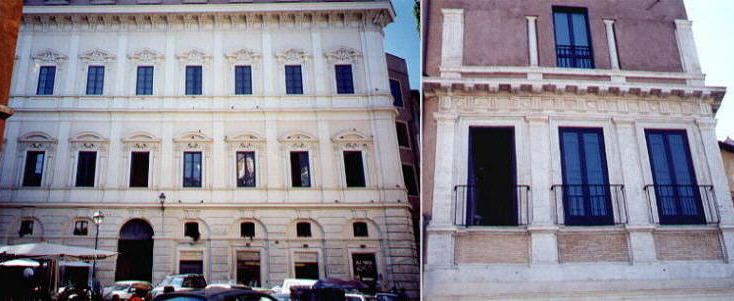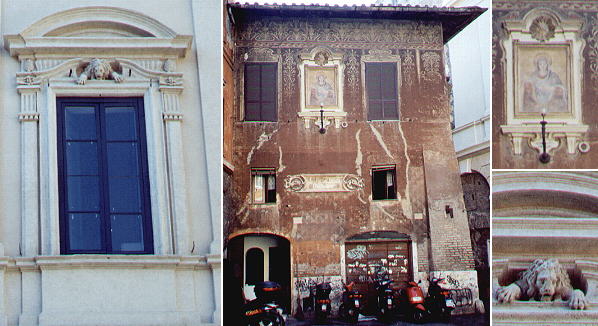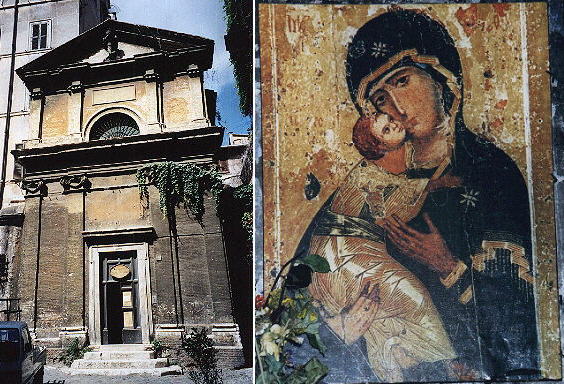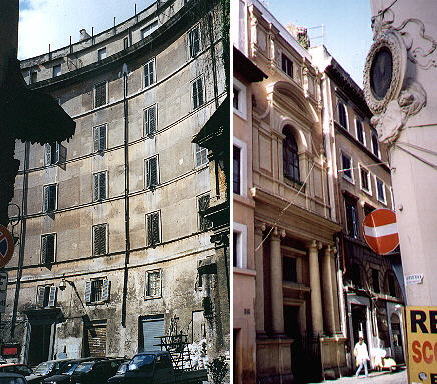  Palazzo Pio (Book 4) (Day 7) (View C7) (Rione Parione) In this page:
Palazzo Pio would unlikely rank among the 20 most famous palaces
of Rome. In the same area Palazzo Spada offered a much more appealing subject,
but Vasi was also an architect and he liked this palace built around 1650
by Camillo Arcucci. The view is taken from the green dot in the small 1748 map here below.
In the description below the plate Vasi made reference to: 1) Door in Campo
de' Fiori;
2) Old palace; 3) Arch leading to S. Maria di Grottapinta; 4) Strada del Paradiso. The small map shows also 5) S. Maria di Grottapinta; 6) Oratorio delle Cinque Piaghe.
The view covers two different sides of Palazzo Pio: the main façade on a little square (Piazza del Biscione) and, still identifiable, although without the statues, a smaller one overlooking Campo de' Fiori.
Camillo Arcucci worked with Borromini at the Oratorio de' Filippini. Although the current use and state of the building and the addition of another floor spoil somewhat its overall view, the palace has interesting solutions from the bugnato on the ground floor, to the windows on the first and second floors. Not only churches, fountains and palaces tell us what was Rome in the past centuries, but also more modest buildings have managed to survive and are now protected. This applies to the house to the left of Palazzo Pio.
In the plate Vasi shows the entrance of GrottaPinta (the painted cave) probably a corridor of the Theatre of Pompey: the ceiling is painted and an old image is honoured. The passage leads to Via di Grotta Pinta where the small church mentioned in the plate is now an antique shop.
The building to the left of the church clearly shows in its curved lines its origin from the Theatre of Pompey: here Julius Caesar was stabbed to death under a statue of his friend and rival. In a nearby street there is a small oratory belonging to a brotherhood founded in 1501. The building was redesigned in 1863 (image on the right). Excerpts from Giuseppe Vasi 1761 Itinerary related to this page:
Next plate in Book 4: Palazzo Massimi Next step in Day 7 itinerary: Campo di Fiore Next step in your tour of Rione Parione: Santa Barbara dei Librai
Go
to |
All images © 1999 - 2003 by Roberto Piperno. Write to romapip@quipo.it
